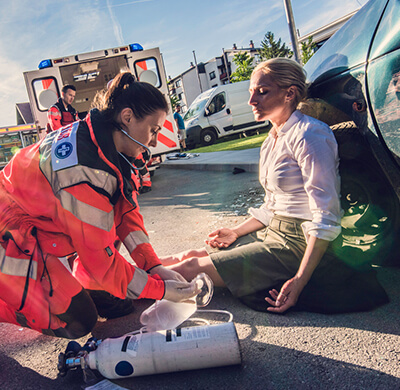Welcome to the Patient Education Library of Texas Medical Institute
Scoliosis - Curvature of the Spine
Click the white PLAY button to start the video.
Scoliosis is an abnormal curvature of the spine. A healthy spine has natural front to back curves. Scoliosis is a condition that describes side to side curvatures of the spine, that often also involve rotational deformities. Some people are born with scoliosis, or it may result from neuromuscular conditions, osteoporosis, or for unknown reasons (idiopathic scoliosis).
Scoliosis is a progressive condition that can become worse over time. Untreated severe curvatures can cause medical complications. Scoliosis may be monitored or treated with back bracing or surgery.
Read more about Scoliosis - Curvature of the Spine
Introduction
Scoliosis is an abnormal curvature of the spine. A healthy spine has natural front to back curves. Scoliosis is a condition that describes side to side curvatures of the spine, that often also involve rotational deformities. Some people are born with scoliosis, or it may result from neuromuscular conditions, osteoporosis, or for unknown reasons (idiopathic scoliosis).
Scoliosis is a progressive condition that can become worse over time. Untreated severe curvatures can cause medical complications. Scoliosis may be monitored or treated with back bracing or surgery.
Anatomy
Causes
Symptoms
Diagnosis
Treatment
Back bracing is appropriate for children with idiopathic scoliosis that are still growing, but it does not work well for those with congenital or neuromuscular scoliosis.
Surgery
Surgery is usually required for spine curvatures that are greater than 40 degrees. Curves greater than 40 degrees have a high risk of getting worse, leading to potential complications. Spinal fusion surgery is used to correct the curve in the spine and connect the vertebrae together. The vertebrae are fused together with surgical hardware, such as rods and screws. Temporarily, a back brace may be worn while the spine heals. In some cases, additional surgeries may be necessary over time.
Recovery

Copyright © - iHealthSpot Interactive - www.iHealthSpot.com
This information is intended for educational and informational purposes only. It should not be used in place of an individual consultation or examination or replace the advice of your health care professional and should not be relied upon to determine diagnosis or course of treatment.
The iHealthSpot patient education library was written collaboratively by the iHealthSpot editorial team which includes Senior Medical Authors Dr. Mary Car-Blanchard, OTD/OTR/L and Valerie K. Clark, and the following editorial advisors: Steve Meadows, MD, Ernie F. Soto, DDS, Ronald J. Glatzer, MD, Jonathan Rosenberg, MD, Christopher M. Nolte, MD, David Applebaum, MD, Jonathan M. Tarrash, MD, and Paula Soto, RN/BSN. This content complies with the HONcode standard for trustworthy health information. The library commenced development on September 1, 2005 with the latest update/addition on February 16, 2022. For information on iHealthSpot’s other services including medical website design, visit www.iHealthSpot.com.






